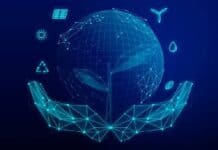Lowing its dependency of diesel-powered backup generators, Microsoft is testing hydrogen fuel cells for backup power at its data centres and the initial results are encouraging.
In a worldwide first that could jumpstart a long-forecast clean energy economy built around the most abundant element in the universe, hydrogen fuel cells powered a row of data centre servers for 48 consecutive hours, Microsoft announced this week.
For 48 hours of backup power generation, each data centre would require up to 100,000 kg of hydrogen to fuel the backup generators for an extended power outage.
Diesel fuel currently accounts for less than 1 per cent of Microsoft’s overall emissions and its use is primarily confined to Azure data centres.
“They (diesel fuel) are expensive. And they sit around and don’t do anything for more than 99 per cent of their life,” said Mark Monroe, a principle infrastructure engineer on Microsoft’s team for datacenter advanced development.
In recent years, hydrogen fuel cell costs have plummeted to the point that they are now an economically viable alternative to diesel-powered backup generators.
“The idea of running them on green hydrogen fits right in with our overall carbon commitments,” Monroe said.
An Azure data centre outfitted with fuel cells, a hydrogen storage tank and an electrolyzer that converts water molecules into hydrogen and oxygen could be integrated with the electric power grid to provide load balancing services.
For example, the electrolyzer could be turned on during periods of excess wind or solar energy production to store the renewable energy as hydrogen.
Then, during periods of high demand, Microsoft could start up the hydrogen fuel cells to generate electricity for the grid.
Hydrogen-powered long-haul vehicles could pull up at data centres to fill their tanks.
“All of that infrastructure represents an opportunity for Microsoft to play a role in what will surely be a more dynamic kind of overall energy optimization framework that the world will be deploying over the coming years,” said Lucas Joppa, Microsoft’s chief environmental officer.
Scientists have already proved that hydrogen fuel cells can be used to generate greenhouse gas-free energy from the most abundant element in the universe.
Backup generators are fired up during power grid outages and other service interruptions.
Microsoft is researching replacement technologies to diesel that would maintain or improve service availability and sees promise in hydrogen fuel cells and batteries.
The feat is the latest milestone in the company’s commitment to be carbon negative by 2030.
To help achieve that goal and accelerate the global transition away from fossil fuels, Microsoft is also aiming to eliminate its dependency on diesel fuel by 2030, said the company.
(IANS)














